Kenya is home to an array of bluebirds, ranging from the bright blue Superb Starling to the more subtle-hued Somali Starling. These birds are some of the most colorful and vibrant in the world and contribute to the beauty and diversity of Kenya’s avifauna.
While the Superb Starling is one of the most recognizable birds in Kenya, the Somali Starling is a bit more elusive, but just as stunning. Both species have unique characteristics that make them stand out in the wild and are well worth checking out on a bird-watching safari..
1. Blue-Headed Bee-Eater
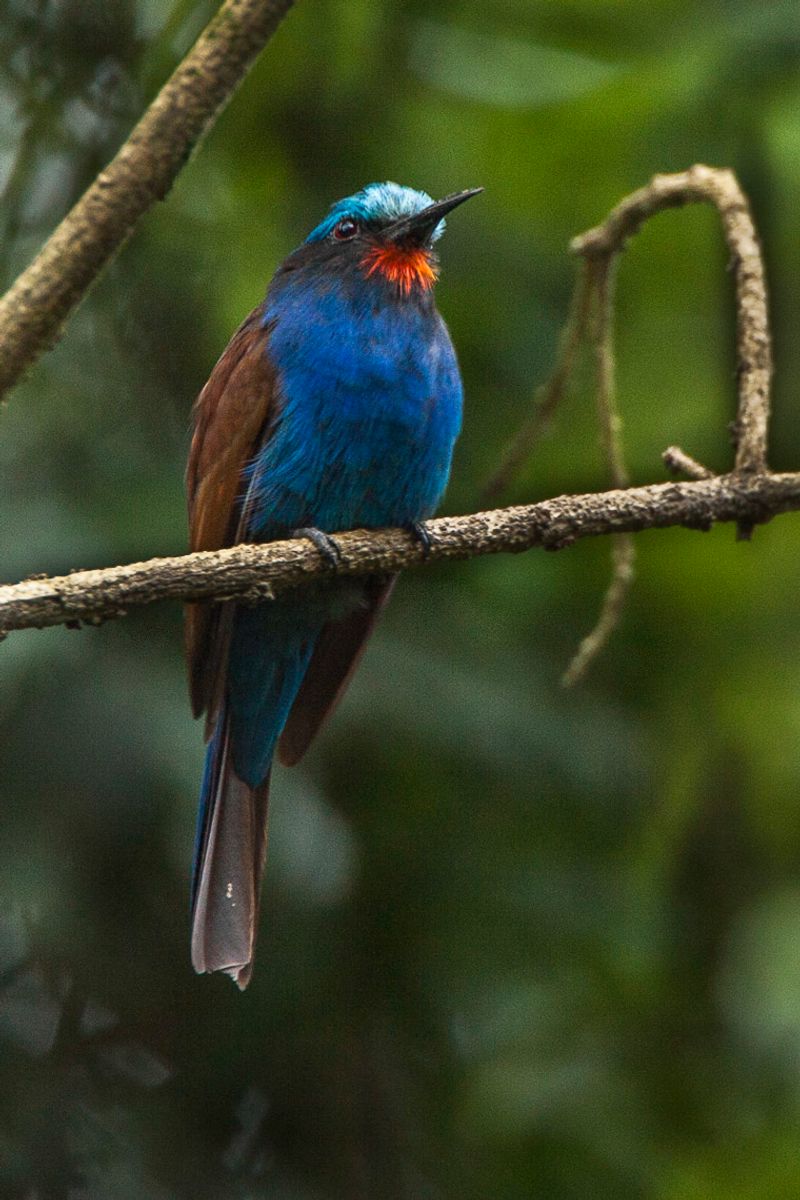
The blue-headed bee-eater is an exotic species of bird found in tropical West and Central African forests. It belongs to the family Meropidae, which is made up of bee-eaters and rollers.
This species is native to countries such as Cameroon, Central African Republic, Republic of the Congo, Democratic Republic of the Congo, Gabon, Equatorial Guinea, and Kenya. The blue-headed bee-eater is a colorful and attractive bird, known for its bright blue head and chestnut-colored body.
It also has a long tail with white tips, which makes it stand out from its fellow bee-eaters. This species typically lives in small flocks and can be found in both lowland and highland forests.
In terms of its diet, the blue-headed bee-eater mainly feeds on bees, wasps, and other small insects. The blue-headed bee-eater is an important species for conservation as its numbers have been declining in recent years due to habitat destruction, hunting, and trapping.
It is listed as Near Threatened on the IUCN Red List. To help ensure the survival of this species, conservation efforts must focus on protecting their natural habitats and educating the public on the importance of protecting this species.
| Kingdom | Animalia |
| Phylum | Chordata |
| Class | Aves |
| Order | Coraciiformes |
| Family | Meropidae |
| Genus | Merops |
| Species | M. muelleri |
2. Woodland Kingfisher
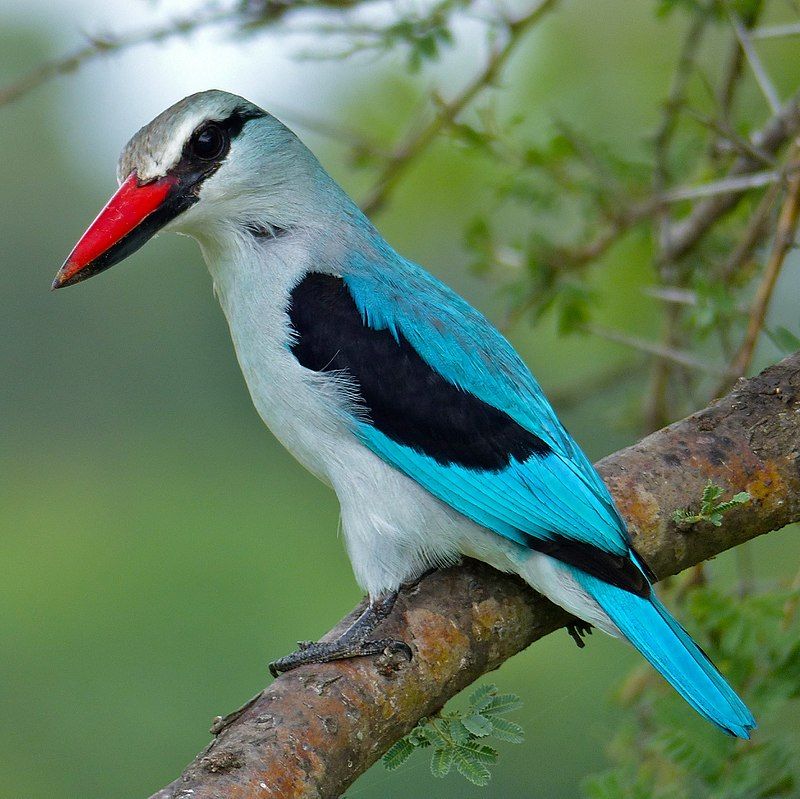
The woodland kingfisher is a species of kingfisher found throughout much of Africa, south of the Sahara Desert. It is a medium-sized bird, measuring between 18 and 22 cm in length, and is easily identified by its bright blue and orange plumage.
Although they are primarily tree-dwelling birds, they are also found near water and can often be seen perched atop branches overhanging rivers and streams.
They typically feed on small fish, crustaceans, insects, and amphibians, which they catch from the air with their sharp beaks. Due to its widespread distribution and abundance, the woodland kingfisher is a common sight across much of Africa.
It is an important part of the avian ecosystem and plays an important role in controlling populations of small fish, insects, and other creatures that inhabit the rivers and streams that it frequents..
| Kingdom | Animalia |
| Phylum | Chordata |
| Class | Aves |
| Order | Coraciiformes |
| Family | Alcedinidae |
| Genus | Halcyon |
| Species | H. senegalensis |
3. Blue-Headed Coucal
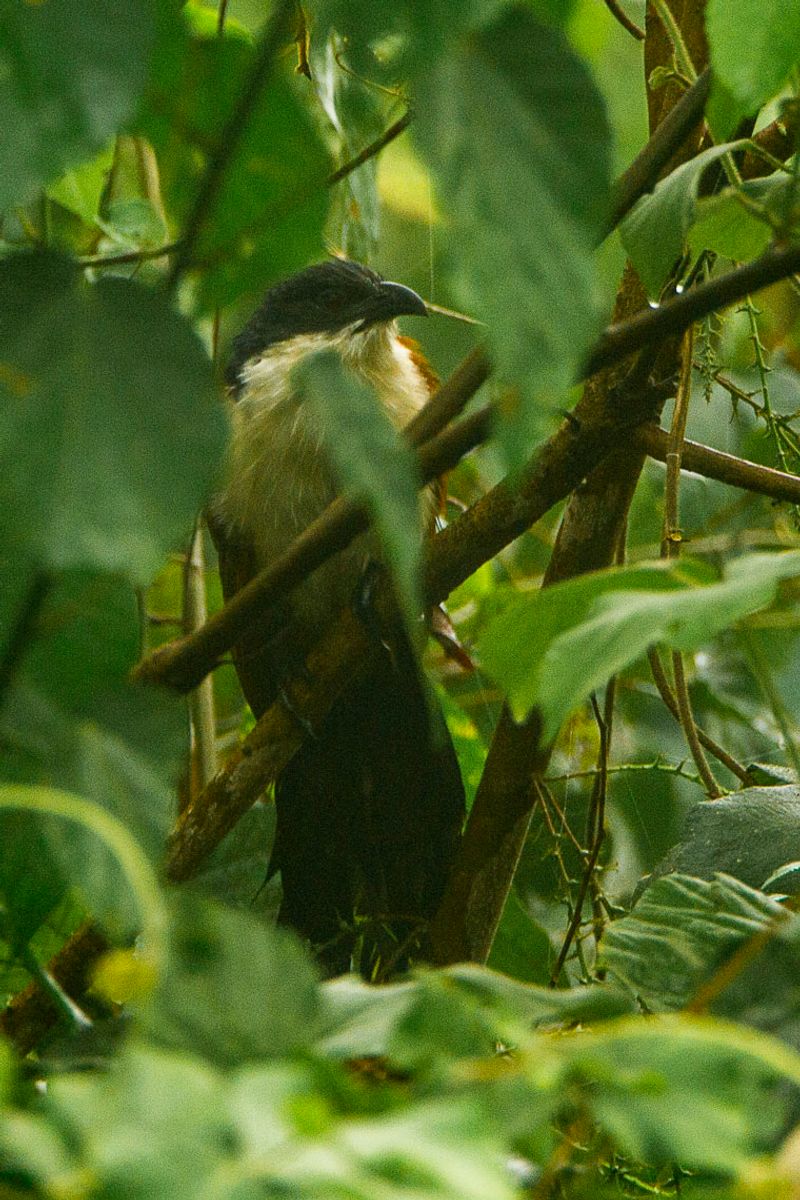
The blue-headed coucal is a type of cuckoo that lives in Africa. It is found throughout tropical Central Africa, particularly in areas that are damp and wet, such as swamps, river banks, and forest edges.
The blue-headed coucal is an important species for the African environment, as it helps control the numbers of insects, small mammals, and other invertebrates that can cause harm to the area’s plant life.
Additionally, the coucal is an important part of the African food chain, providing food for a variety of other animals. This species is also a popular target for birdwatchers and ecotourists, who come to observe its behavior in the wild.
The blue-headed coucal is a beautiful and unique creature, with a striking head of blue feathers and a long, curved tail. Its presence in the African environment is essential to maintaining the balance of the ecosystem.
| Kingdom | Animalia |
| Phylum | Chordata |
| Class | Aves |
| Order | Cuculiformes |
| Family | Cuculidae |
| Genus | Centropus |
| Species | C. monachus |
4. Blue-Spotted Wood Dove
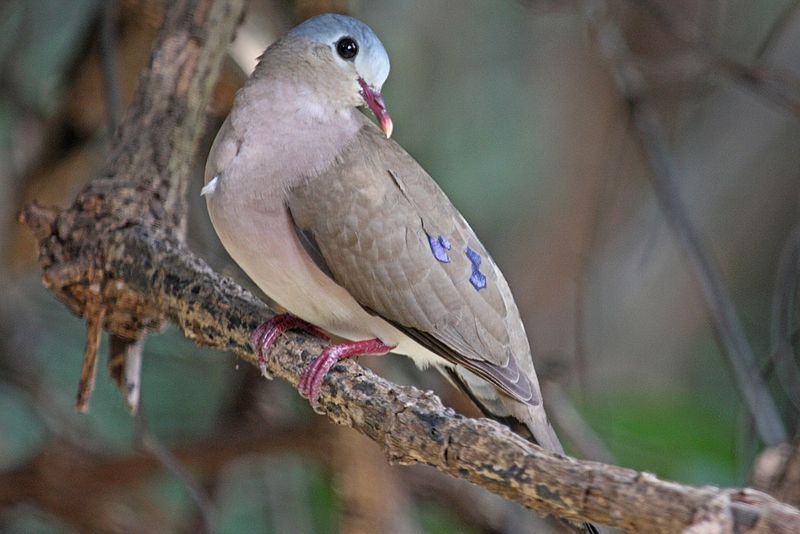
The blue-spotted wood dove is a type of bird that belongs to the Columbidae family. This species is found in abundance in the regions of Africa south of the Sahel Desert.
In East Africa, the species is present in some areas, but it is not found in the southern parts of the continent. The blue-spotted wood dove is typically characterized by its blue-spotted feathers.
This species is known to inhabit savannas, dry grasslands, and other open areas with sparse vegetation. They usually feed on seeds and fruits available in these habitats. They are also known to frequent water bodies such as rivers, streams, and lakes, in search of food.
The blue-spotted wood dove is known to form monogamous pairs during the breeding season. The female lays two eggs in a nest which is usually built on a tree or a bush. The incubation period of the eggs is around 14 days.
The chicks fledge after about 20 days and become independent shortly afterward. The blue-spotted wood dove is not listed as a threatened species and its population is considered to be stable.
Although the species is not considered to be endangered, conservation efforts are needed to ensure the long-term survival of the species in its natural habitats.
| Kingdom | Animalia |
| Phylum | Chordata |
| Class | Aves |
| Order | Columbiformes |
| Family | Columbidae |
| Genus | Turtur |
| Species | T. afer |
5. Blue-Breasted Bee-Eater
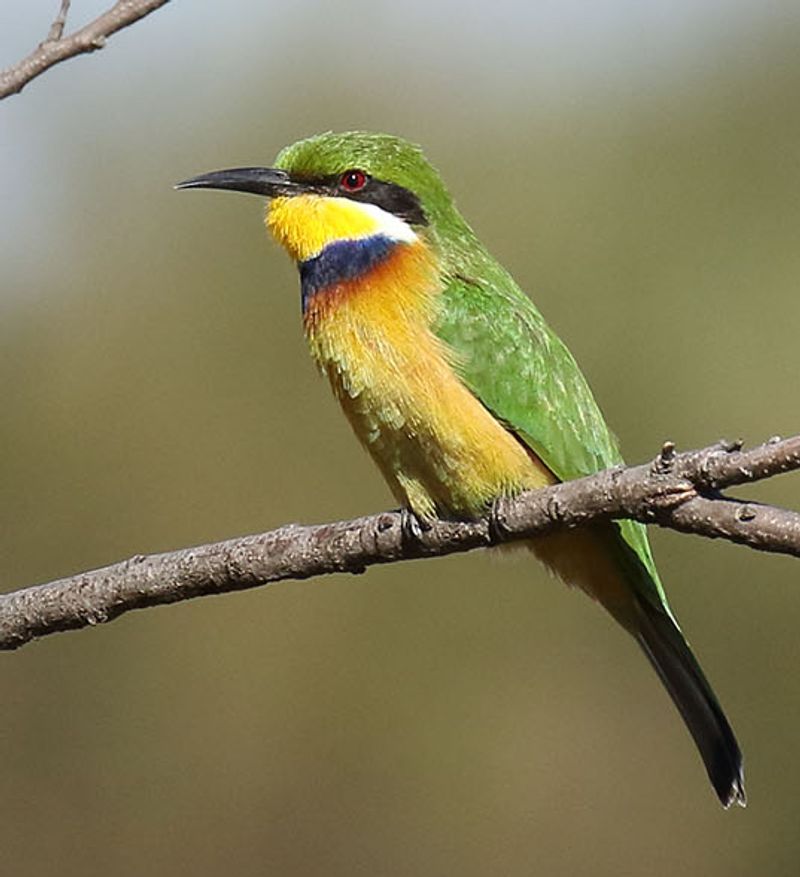
The blue-breasted bee-eater is a species of bird native to Central Africa. It belongs to a family of birds called Meropidae, which are all quite similar in appearance.
Meropids have a specialized diet that consists mainly of Hymenopterans, a large order of insects that includes bees, wasps, and ants. These birds have blue feathers on their chests which is what gives them their name.
They are known for their acrobatic flying style, which they use to catch their prey in midair. They also have a unique call which is often used to locate their mates and warn of predators.
These birds are important to the ecosystem as they help to control the population of Hymenopterans, which can sometimes become a nuisance if not kept in check.
| Kingdom | Animalia |
| Phylum | Chordata |
| Class | Aves |
| Order | Coraciiformes |
| Family | Meropidae |
| Genus | Merops |
| Species | M. variegatus |
6. Blue-cheeked Bee-Eater
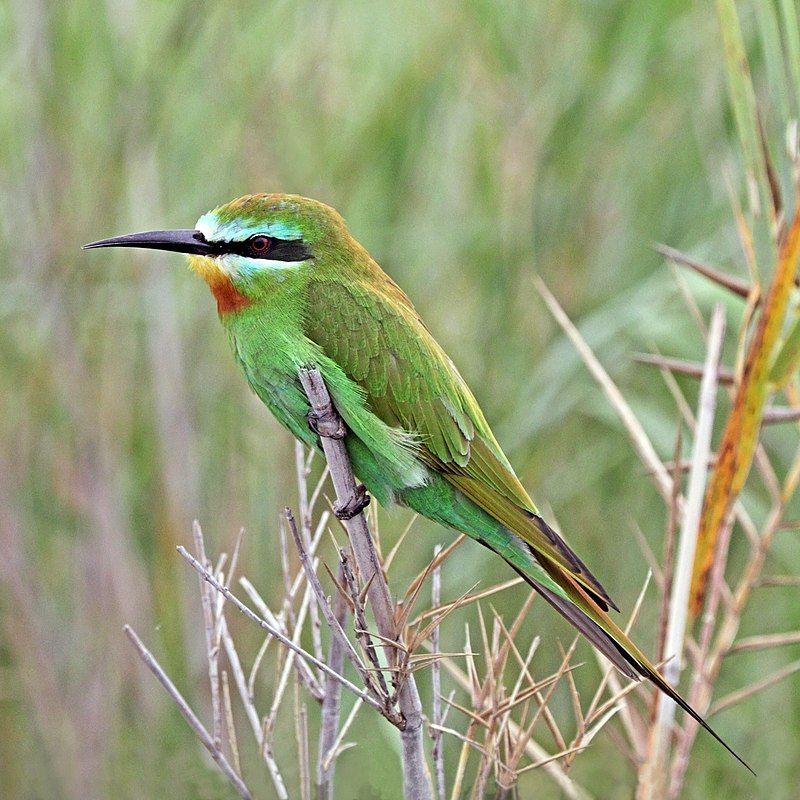
The blue-cheeked bee-eater is a unique species of near-passerine bird that belongs to the family Meropidae. It is a bird that is found in many different regions across the world, primarily in Northern Africa, and the Middle East.
The scientific name for this species is Merops persicus and the name itself is derived from Ancient Greek and Latin.
Merops is Ancient Greek for “bee-eater”, indicating the bird’s diet, while persicus is Latin for “Persian”, referring to the geographic region where the bird is most commonly found.
The blue-cheeked bee-eater has a range that stretches from eastern Turkey to Kazakhstan and India. It nests in the region and feeds on insects such as bees, wasps, and other flying insects.
The bird has bright blue and orange plumage, which it uses to attract mates and also to ward off predators. The blue-cheeked bee-eater is an important part of the local ecosystem and is an important pollinator, playing a significant role in the area’s food chain.
| Kingdom | Animalia |
| Phylum | Chordata |
| Class | Aves |
| Order | Coraciiformes |
| Family | Meropidae |
| Genus | Merops |
| Species | M. persicus |
7. African Green Pigeon
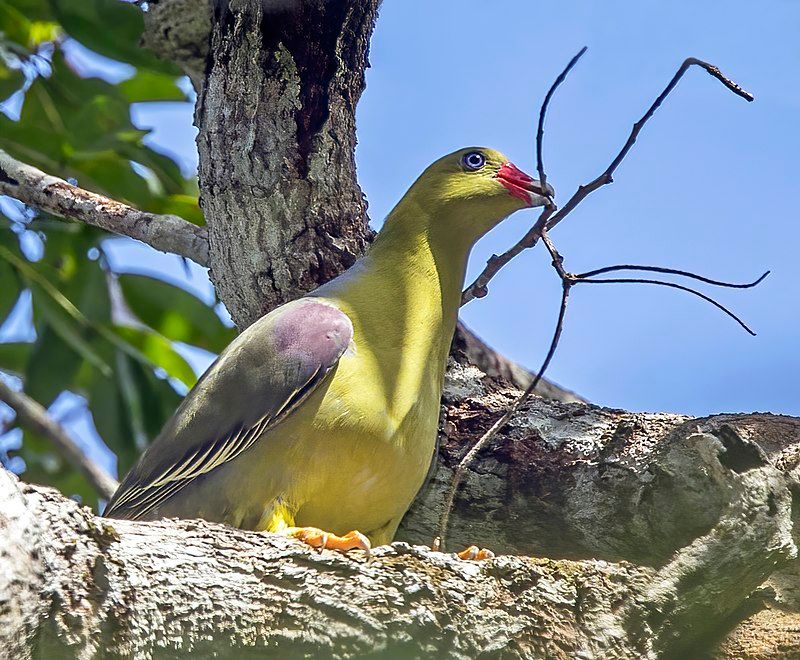
The African green pigeon is one of five species of green pigeons that inhabit the Afrotropics, a biogeographic region that includes sub-Saharan Africa. This species of bird belongs to the family Columbidae, which includes doves and pigeons.
It has a wide range in sub-Saharan Africa and is divided into 17 accepted races. The African green pigeon is a relatively common species, occurring in a variety of habitats including open woodland, savanna, and grassland.
Its diet consists of fruits, seeds, and insects, and it is a strong flier, capable of long-distance migrations. One of the most distinctive features of the African green pigeon is its bright green plumage, which ranges from dark olive to yellowish green in color.
It also has a white throat and red beak. Additionally, the African green pigeon is highly social, often forming large flocks in the sky, and its loud, distinctive call can be heard across the African savanna.
| Kingdom | Animalia |
| Phylum | Chordata |
| Class | Aves |
| Order | Columbiformes |
| Family | Columbidae |
| Genus | Treron |
| Species | T. calvus |
8. Vulturine Guineafowl
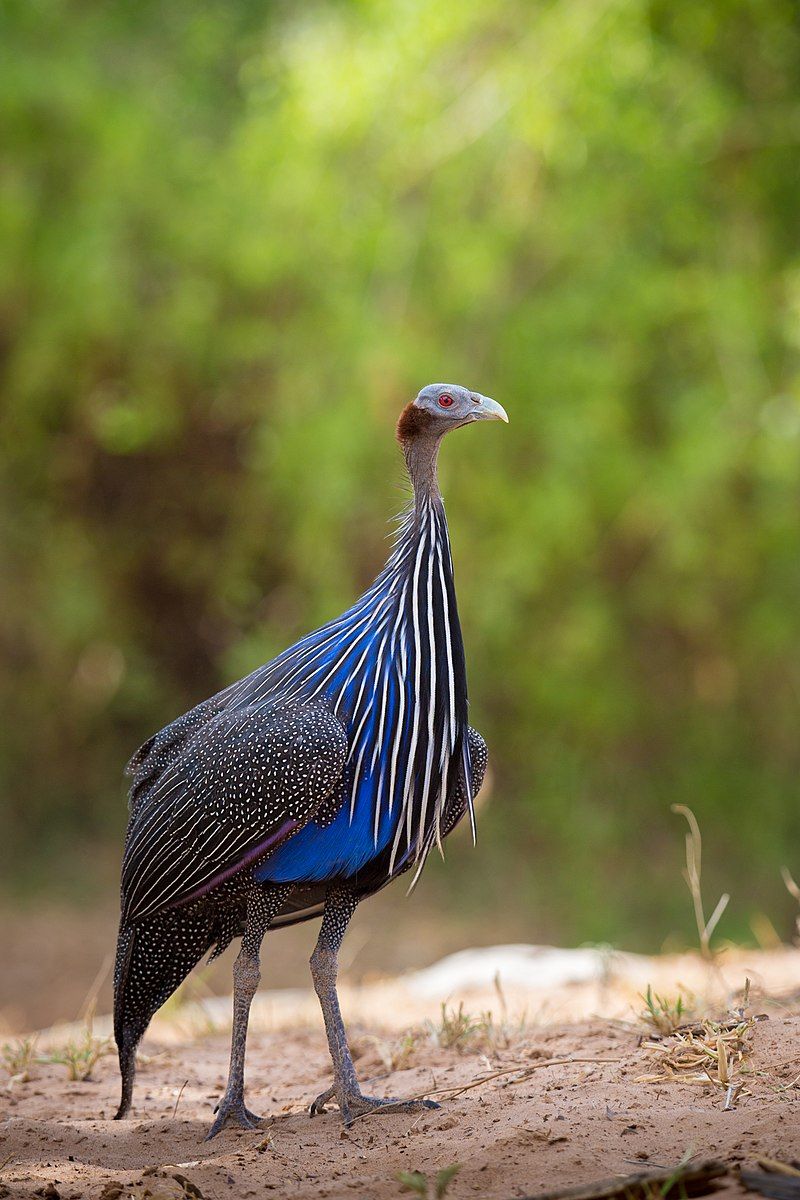
The vulturine guineafowl is an impressive bird, not only because of its size but also because of its scientific distinctiveness. It is the largest species of guineafowl alive today and is only distantly related to other guineafowl genera.
This means that it has evolved separately from other guineafowl species over time, leading to its unique characteristics. The white-breasted guineafowl is the closest living relative of the vulturine guineafowl and inhabits primary forests in Central Africa.
This indicates that the vulturine guineafowl likely has its origins in Central Africa, before spreading out to other areas.
The continued existence of the white-breasted guineafowl in its native environment, meanwhile, is a reminder of the importance of preserving the natural habitats of these incredible birds.
| Kingdom | Animalia |
| Phylum | Chordata |
| Class | Aves |
| Order | Galliformes |
| Family | Numididae |
| Genus | Acryllium |
| Species | A. vulturinum |
9. Masked Booby
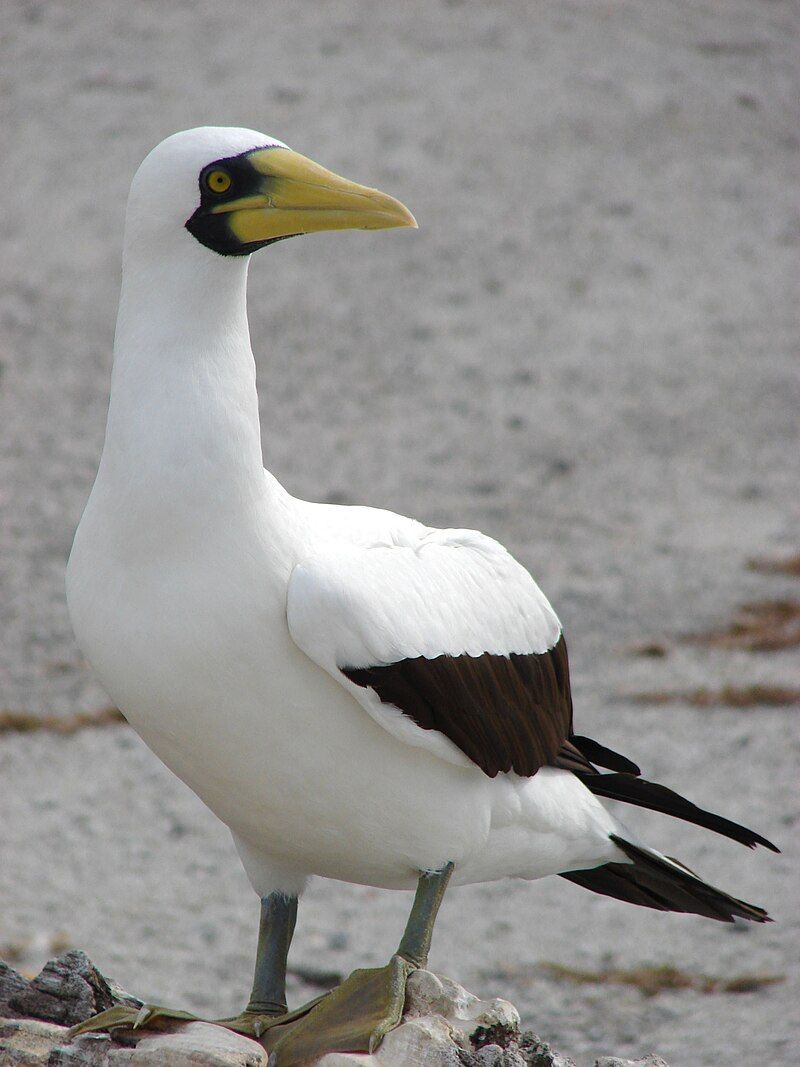
The masked booby is a large seabird that belongs to the Sulidae family, more commonly known as the booby and gannet family. This species is also referred to as the masked gannet or blue-faced booby and was first described by the French naturalist René-Primevère Lesson in 1831.
The masked booby is one of six species of booby that are found in the genus Sula. Masked boobies are a large bird species, with adults measuring an average of 88 cm (34.6 in) in length from beak to tail and weighing up to 2.2 kg (4.8 lbs).
They have a white body with black and white wings, a black tail, and a bright blue face. They are strong swimmers and are known to dive from great heights into the ocean in search of food. They mainly feed on fish, but will also eat squid and crustaceans.
Masked boobies are found in tropical and subtropical waters, breeding on islands in the Caribbean, Atlantic, and Pacific Oceans. They form large colonies and nest on the ground. The female will lay a single egg, which is incubated for approximately 6 weeks before hatching.
The chicks are fed regurgitated food by both parents until they are ready to fledge. Masked boobies are considered to be of least concern by the IUCN, as their population numbers are stable.
Despite their large size, they have managed to avoid major threats due to their remote island breeding grounds.
| Kingdom | Animalia |
| Phylum | Chordata |
| Class | Aves |
| Order | Suliformes |
| Family | Sulidae |
| Genus | Sula |
| Species | S. dactylatra |
10. Meyer’s Parrot
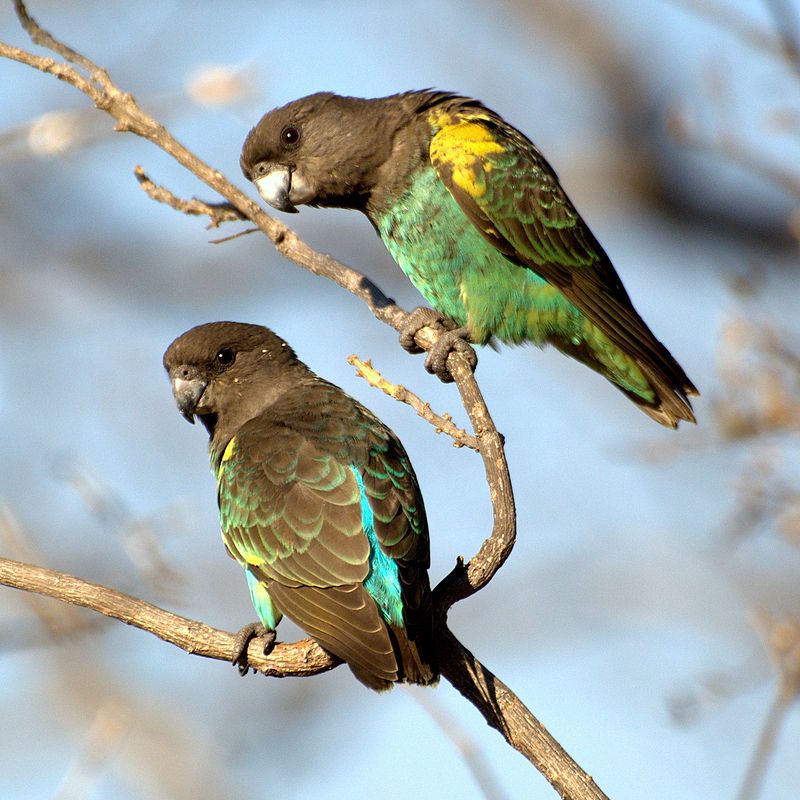
The Meyer’s parrot is an African species of parrot that is easily recognizable due to its distinctive coloration. Its body is covered in grey feathers, and its underside is bright turquoise.
Its wings also feature bright yellow markings on the carpal joint, which is the point where the wing meets the body. Additionally, most subspecies of the Meyer’s parrot have yellow feathers on top of the head.
This combination of grey and yellow feathers helps to set Meyer’s parrot apart from other species of parrots. Furthermore, Meyer’s parrot is also sometimes referred to as the brown parrot, due to the dominant color of its body feathers.
All of these features make the Meyer’s parrot a beautiful and unique species of bird.
| Kingdom | Animalia |
| Phylum | Chordata |
| Class | Aves |
| Order | Psittaciformes |
| Family | Psittacidae |
| Genus | Poicephalus |
| Species | P. meyeri |
Conclusion
The bluebirds of Kenya are a unique and wonderful species that is important to the country’s biodiversity.
They are a valuable part of many ecosystems in Kenya, providing food and shelter for other animals, as well as providing a source of beauty and pleasure for humans.
While their numbers have been slowly declining due to habitat destruction, it is important that their habitats are protected in order to preserve these birds for future generations.